In the last half a year or so, we’ve gotten not one but two epic western fantasy RPGs in the form of Dragon Age: Inquisition and The Witcher 3: Wild Hunt. It’s only natural that we’d want to compare them.
Last fall, I reviewed Inquisition. I liked it! Then in May, I reviewed The Witcher 3. I liked it, too! My feelings on both games haven’t changed all that much — I still like both of them, and I’d still wholeheartedly recommend you go play them both. And while the games share a certain top-level look and feel, they’re very different in a lot of ways. Each one has given me a better appreciation for things the other game did well, while also clarifying what could’ve been better.
With that in mind, I’ve set about the not-insubstantial task of comparing the two. Spoilers for both games follow, though only one section — marked “The Ending” — will talk about both games’ endings. Let’s cut the intro chatter and get right to it.
The Hero(ine)

Dragon Age: Inquisition stars a person alternately known as “The Inquisitor” or “The Herald of Andraste.” You can customise your character from a variety of races and classes, and can play as either a man or a woman. Those decisions colour how people interact with you and open up or close off various romantic options. I can’t remember who made this joke, but: The best possible option was to name your Herald “Harold,” so that when people greeted you on the street, it sounded like they were greeting you by name.
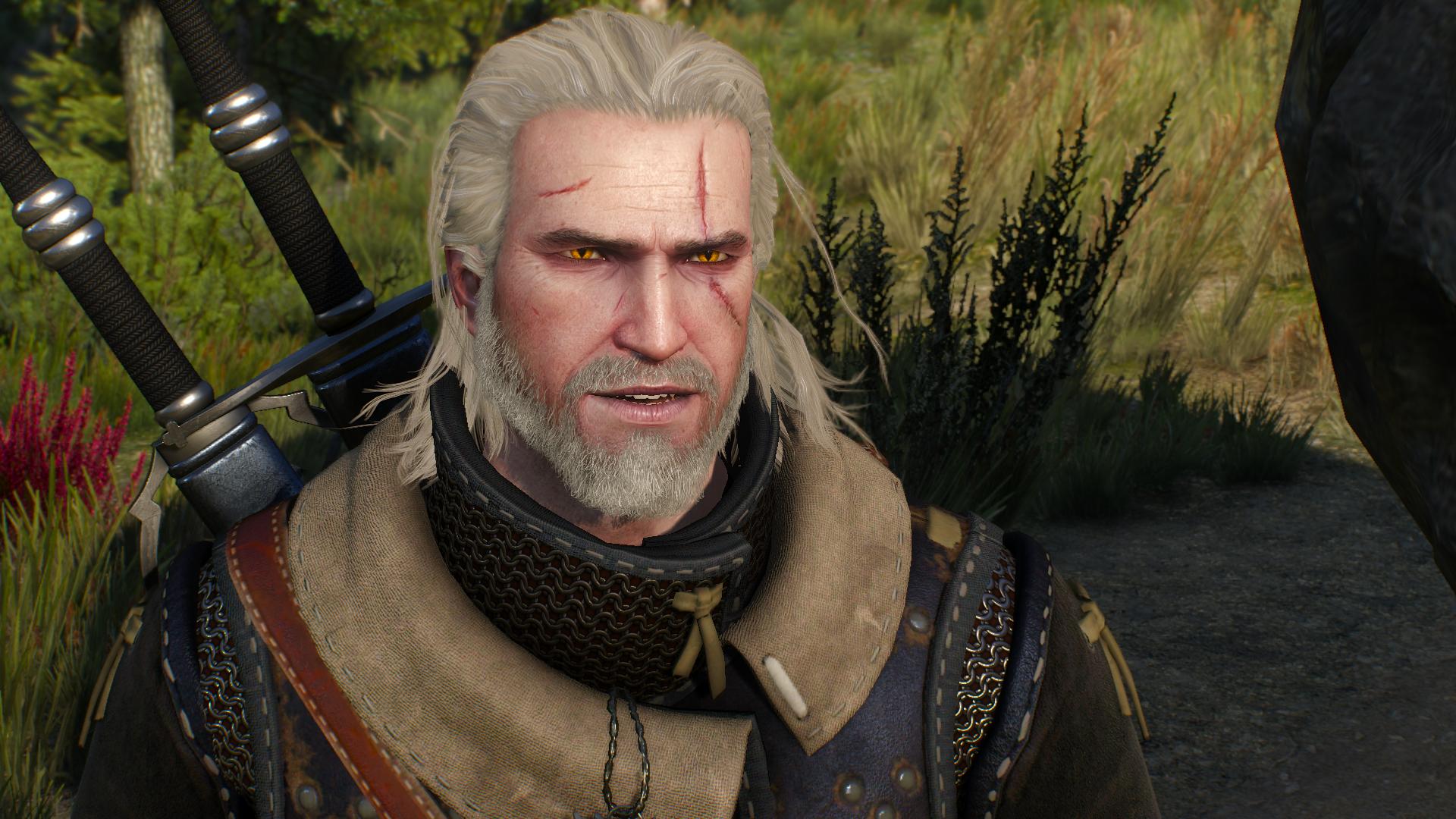
The Witcher: Wild Hunt stars Geralt of Rivia, the handsomest, most coolest badass in the northern kingdoms. He’s a one-man monster-killing machine, and he tends to wind up embroiled in events that involve sorceresses, great rulers, and the fates of entire kingdoms. He’s a minor celebrity thanks to the ballads of his friend the bard Dandelion, who wrote a particularly famous song about Geralt’s love affair with the sorceress Yennefer. Geralt is a taciturn fellow who keeps his own council, and while you don’t really get to “define” him over the course of the game, you do get to help him make major (and minor) decisions.
Edge: Draw. This one’s tough, because the two games take such different approaches. Inquisition lets you create a character and really role-play in the traditional sense. Wild Hunt is more of a Geralt of Rivia-simulator, and you’re choosing how you want to act in a more predetermined part. Both approaches have strengths and weakness, and both allow their respective games to experiment with storytelling techniques that wouldn’t work in the other game. They’re actually nice complements to one another.
The Supporting Cast
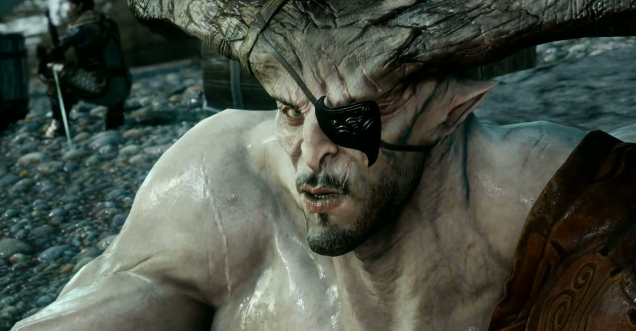
Dragon Age: Most of Inquisition is concerned with creating and fortifying friendships and alliances with a large supporting cast. Each major party member you recruit is a possible avenue for intrigue and romance, and as you go through the story, you’ll learn more and more about them, eventually (hopefully) coming to think of them as family.
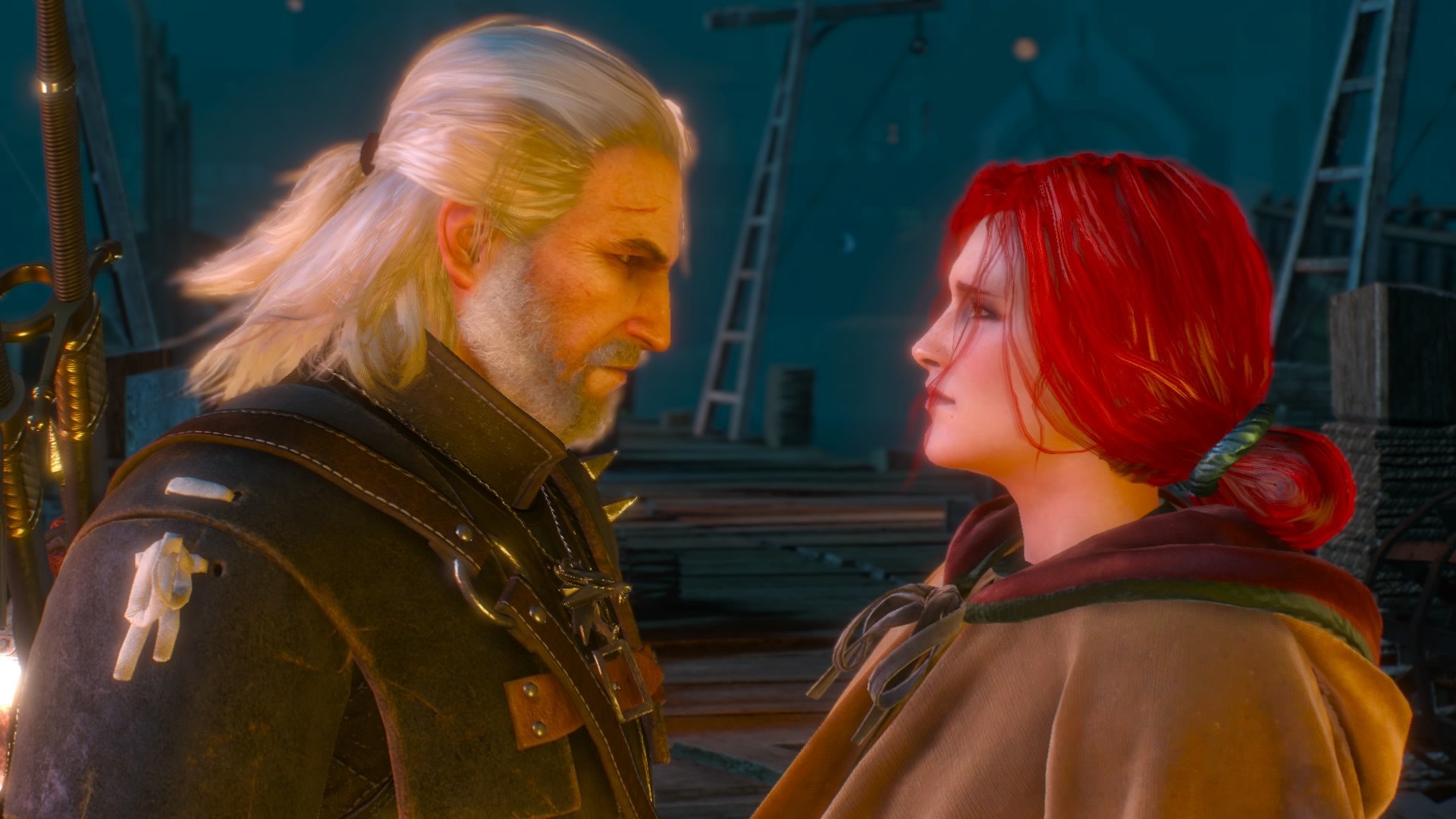
The Witcher: Wild Hunt doesn’t have “party members” in the traditional RPG sense; other characters will accompany you from time to time, but it’s largely a solo adventure. The game’s cast is more spread out, and only rarely do they all unite to accomplish something together. The result is more of a series of individual encounters — encounters which can shift from intimate to deadly as circumstances dictate.
Edge: It’s tough not to give this one to Dragon Age just for giving us so many terrific new characters — Dorian, Josephine, Iron Bull and his Chargers — while further fleshing out the ones we already knew, like Cassandra and Varric. However, Wild Hunt deserves points for the sophistication with which it draws some of its more complicated characters, and the nuance with which it draws even its smallest bit players. Argh, this one is impossible. Is that two ties in a row? Why did I put this one second?
The Villain
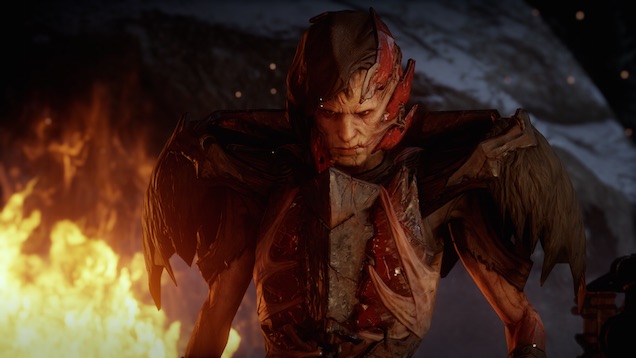
Dragon Age: The bad guy in Inquisition is a powerful darkspawn named Corypheus who was first introduced in DLC for Dragon Age 2. He’s a pretty big jerk, and he has a huge dragon that may or may not be an archdemon.
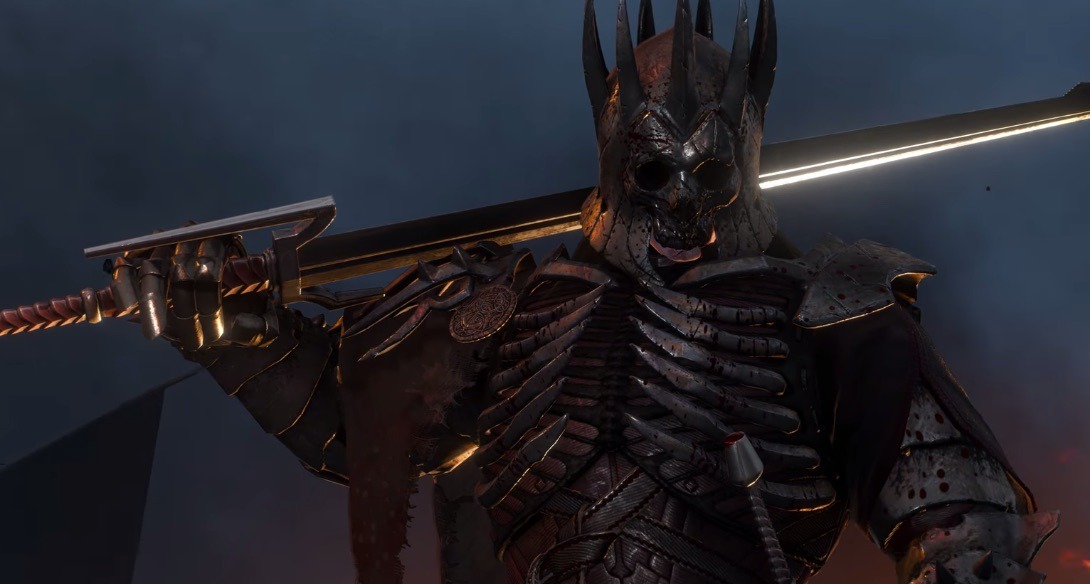
The Witcher: There isn’t one main villain in The Witcher 3; there are several. The primary antagonist is the leader of the Wild Hunt, a towering elf named Eredin, joined by the commanders who lead his army. Other major antagonists include the gnarly crones of Crookback Bog, various sorceresses and military leaders, and even a king or an emperor… depending on the choices you make.
Edge: Two very different approaches, but in the end, The Witcher gets this one. If you’re going to have one definitive Villain, it should be a well-defined foe who actually tells us something about our heroes. Corypheus was too much of a cipher, in the end. The members of Wild Hunt‘s rogue’s gallery often had their own complicated and conflicting motivations, and each of them served to test the relationship between Geralt and Ciri in different ways.
The Lore
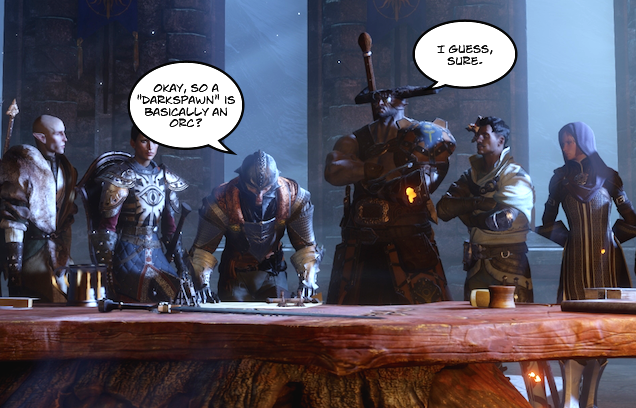
Dragon Age: Inquisition is built on several games and books’ worth of lore from the Dragon Age universe, which is owned by EA/BioWare. It’s a fairly standard fantasy kind of thing where pointy-eared elves are an oppressed minority, dwarves are master craftsmen, and kingdoms wage war while also fighting off monsters and demons. Its most notable bit of lore is the story of the Darkspawn, who rise up from the earth every so often and must be battled by The Grey Wardens, a group of soldiers who undergo a deadly trial in order to gain the powers necessary to fight them. Lore Recap Length: 6,097 words.
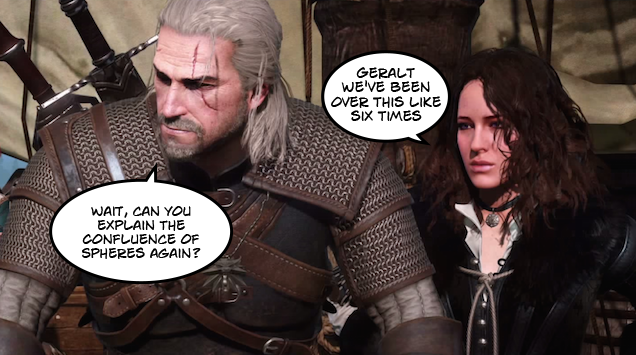
The Witcher: The Witcher games are based on the works of Polish fantasy author Andrzej Sapkowski. They tell of a world overrun by monsters after an ancient event that united several planes of existence, and… they also tell of an order of warriors (Witchers) who undergo a deadly trial in order to gain the powers necessary to fight monsters. (Sapkowski’s work significantly predates the first Dragon Age game.) Witcher lore generally feels dense and informed by a strong sense of pre-existing history, and many of the monsters are rooted in Eastern European folklore. Lore Recap Length: 6,438 words.
Edge: The Witcher. Lore similarities notwithstanding, the Witcher games have a richness that Dragon Age can sometimes lack. That’s not to say that the world of Dragon Age feels thin, but rather that when compared with the weird, grim underpinnings of the Witcher‘s world, Dragon Age‘s can feel more generic. While strict adherence to a series of fantasy novels could easily leave a game’s lore feeling impenetrable, Wild Hunt falls on the right side of the line, and Sapkowski’s books actually lend the world and characters an unusual degree of richness and implied history.
The World Map
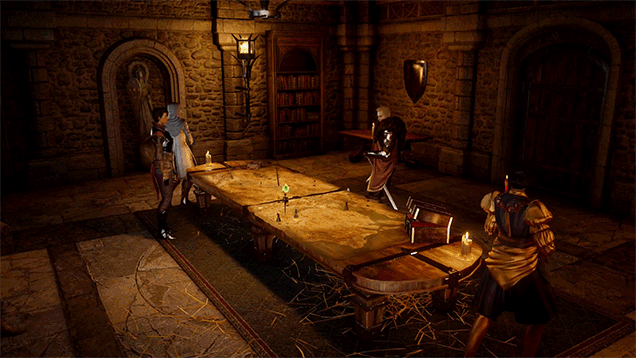
Dragon Age: Dragon Age‘s map is placed on a table in the game world, inside of the war room your inquisitor sets up early on in the game. You have to go to that room in order to assign tasks to your underlings and send people out on “missions” to get you recruits, money, or gear. The game itself is broken up into several large sub-areas, most of which you can visit at any time, once you’ve earned enough experience to unlock them.
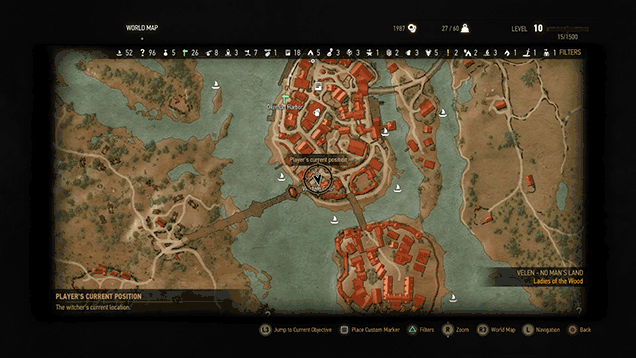
The Witcher: The Witcher 3 has more of a traditional world map — you spend the game in one of a few giant areas (much larger than anywhere in Dragon Age), and can zoom out to view the totality of the northern kingdoms at any time. You can visit anywhere you want from the get-go, though some areas are populated with high-level enemies that will destroy you in the early goings.
Edge: Dragon Age. While Wild Hunt gets credit for having a game world that actually feels kingdom-sized, Inquisition‘s approach to scattering its areas across a large map, then letting you visit an in-game version of that map to allocate resources and troops, is novel and unexpectedly effective. It may not have been deep, but it was a cool idea.
Fast Travel
Dragon Age: You can fast-travel at almost any time in Inquisition, opening the map and then warping from where you’re standing to any of the other major hub areas.
The Witcher: In order to fast-travel in Wild Hunt, you have to get to one of the game’s fast-travel signposts, which are sometimes placed annoyingly far from the vendors/quest givers in that particular area. (Hello, Crow’s Perch.)
Edge: Dragon Age. While it’s nice to have some things exist in the game world, fast travel should probably be as easy to access as possible. I know Geralt hates to teleport, but still….
The Magic
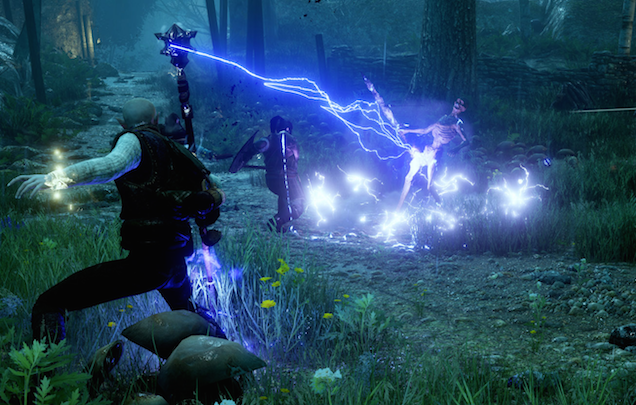
Dragon Age: In Dragon Age, mages can cast fireballs, hurl lightning, transform things into other things, and open dimensional portals. Mages are persecuted by many of the world’s governments, and through their power, are vulnerable to demonic possession.
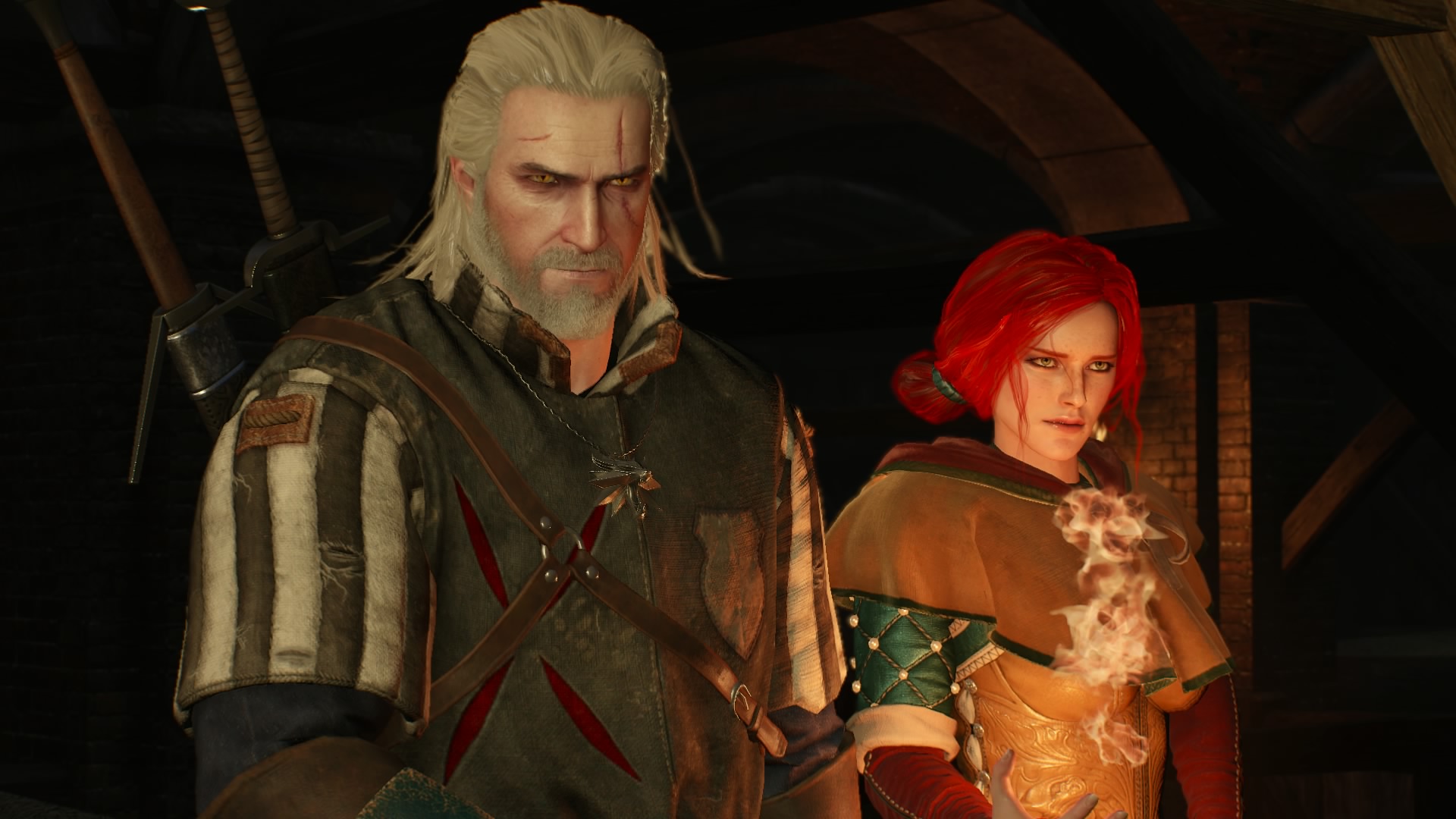
The Witcher: In The Witcher, mages can cast fireballs, hurl lightning, transform things into other things, and open dimensional portals. Mages are persecuted by many of the world’s governments, and there is a lot of bad blood between magic users and kings and other rulers throughout the Northern Kingdoms.
Edge: Jeez, they’re pretty similar. The more scientific aspects of The Witcher‘s magic can be cool, but when it comes down to it, it’s still just “magic.” Dragon Age‘s Circle of Magi is also an interesting idea, though it’s often undermined by how many mages seem to just run around freely doing magic. This one’s a draw.
The Monsters
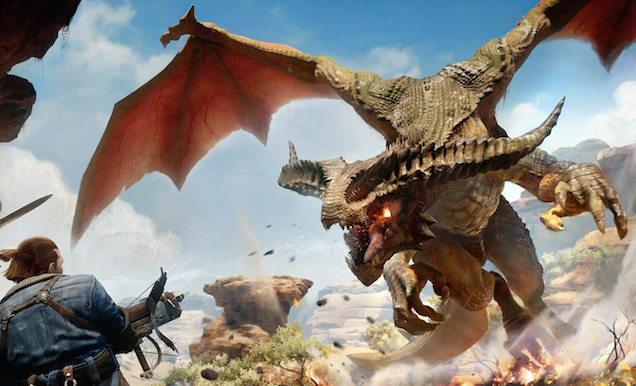
Dragon Age: The Dragon Age series’ most notable monsters are The Darkspawn, a goofily-named group of twisted beings who used to be men, elves and the like, but were twisted by (possibly?) figuring out how to open a portal to… heaven, basically. They live under the surface of the earth digging up old, buried gods. Every time the Darkspawn find a new god, they arise and attempt to overrun the world in an event known as a Blight. With all that explained… well, the thing is, there aren’t actually that many Darkspawn in Inquisition, so we’re mostly just left with more standard-seeming fantasy beasties: Demons, giant spiders, and big lizards.
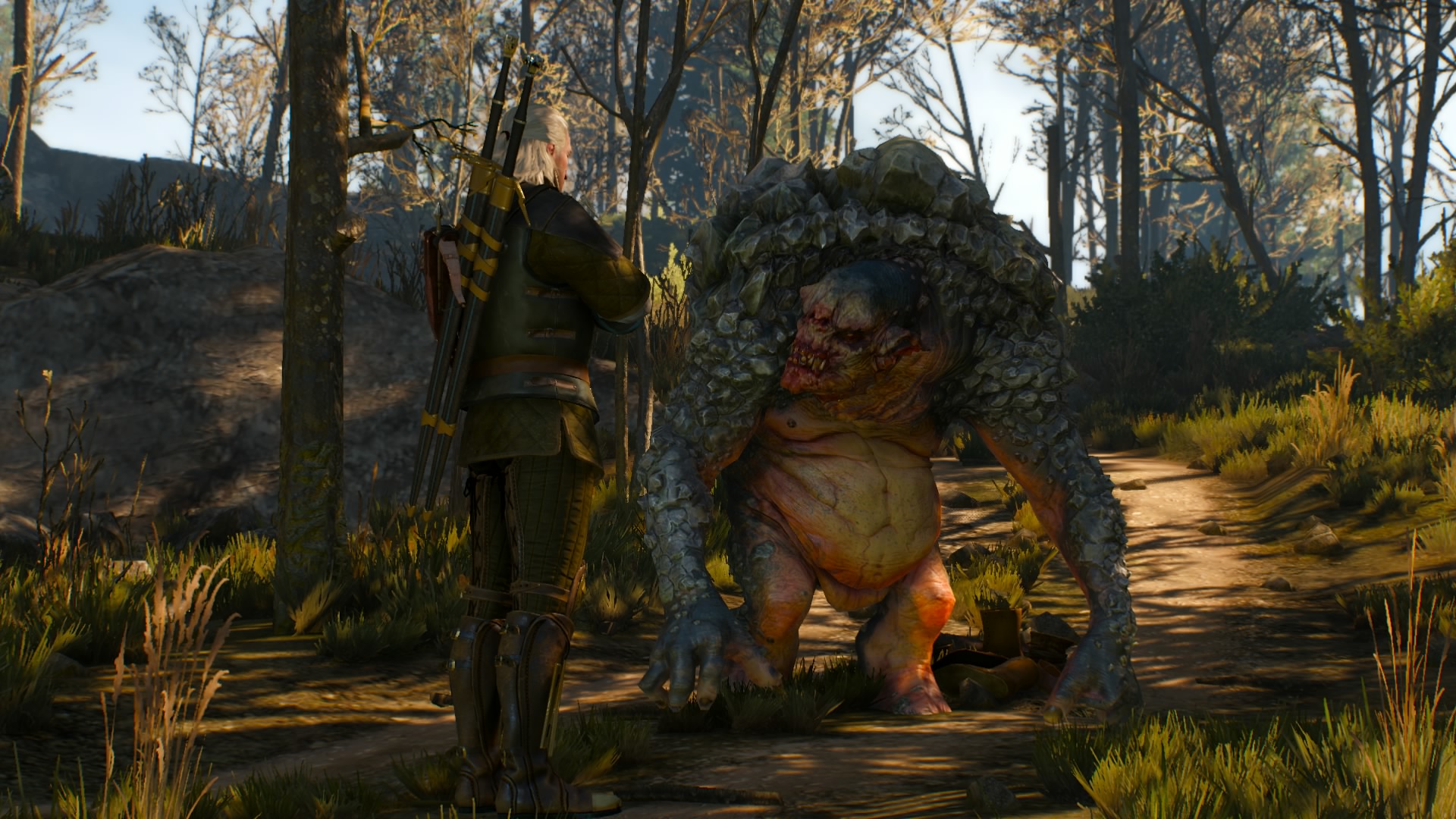
The Witcher: The Witcher‘s monsters mostly don’t have grand aspirations like the Darkspawn, but that’s what makes them interesting. After an ancient event known as the The Conjunction of the Spheres, monsters and men came to the world of The Witcher. Since then, there have always been monsters around hassling everyone — killing villagers in the woods, haunting castles and houses, and stalking trade routes. Witchers are basically the Ghostbusters of the world, hired professionals who deal with monsters on a case-by-case basis.
Edge: The Witcher. That game’s more down-to-earth approach to monster hunting is charming and works well for a video game. You’re playing as a glorified paranormal exterminator, and you’re always broke, so it makes sense that you’d take a break from saving the world to go and help John P. Villager with his Nekker problem. Some of the nastier creatures Geralt comes up against in Wild Hunt — dark spirits like Hyms or Leshins — are extremely cool. Also, The Witcher‘s trolls are some of the most entertaining fantasy trolls of all time.
The Sidequests
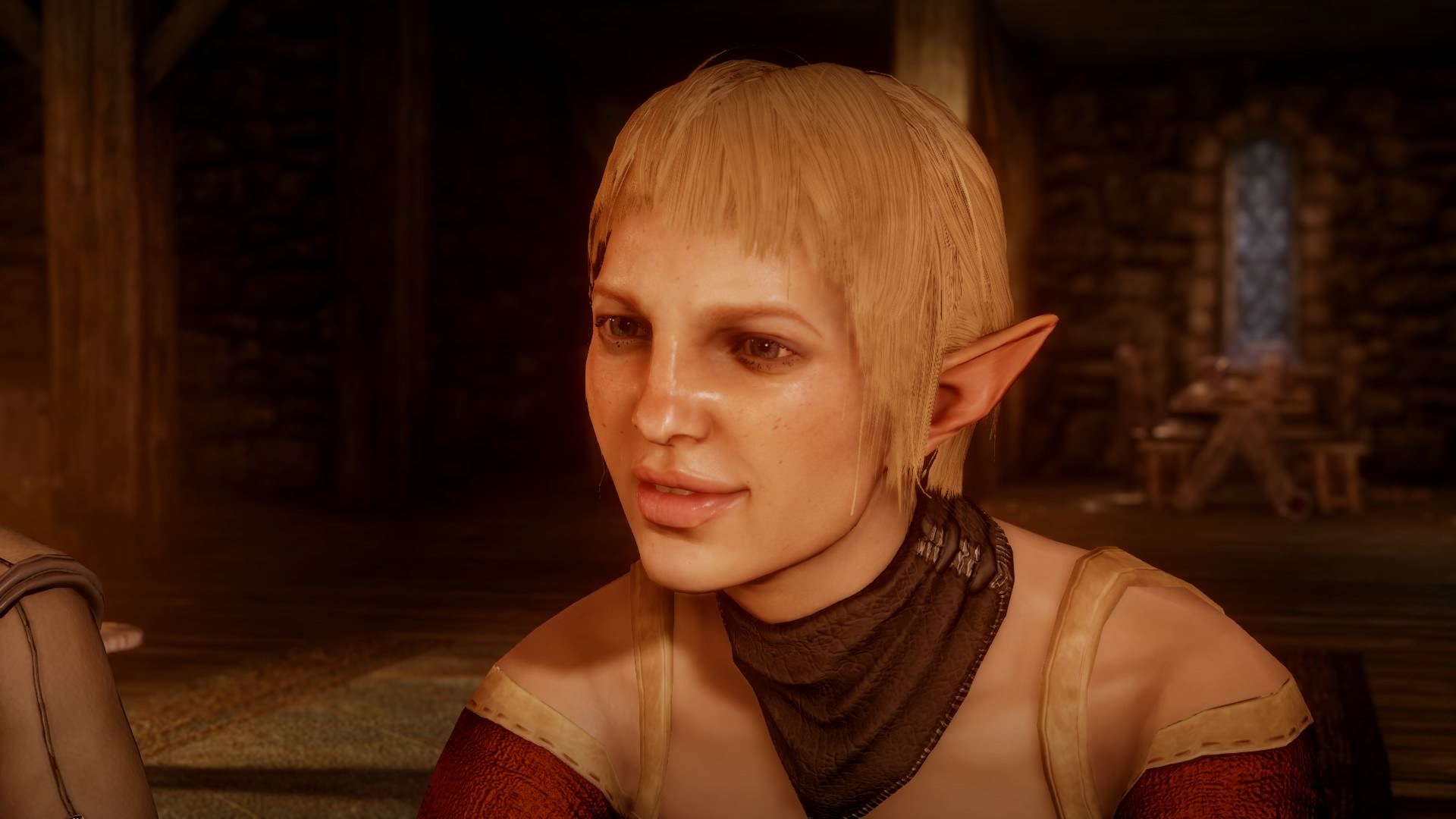
Dragon Age: In Inquisition, there are various “tiers” of sidequests. At the bottom tier there are the straight-up fetch quests, called requisitions. Above those are smaller quests that you stumble upon while exploring, most of which involve picking up a piece of paper, reading it, then going somewhere and talking to/killing someone. Closer to the top are the optional character sidequests you can undertake with your various party members, each of which helps them along their personal journey and helps you to understand them.
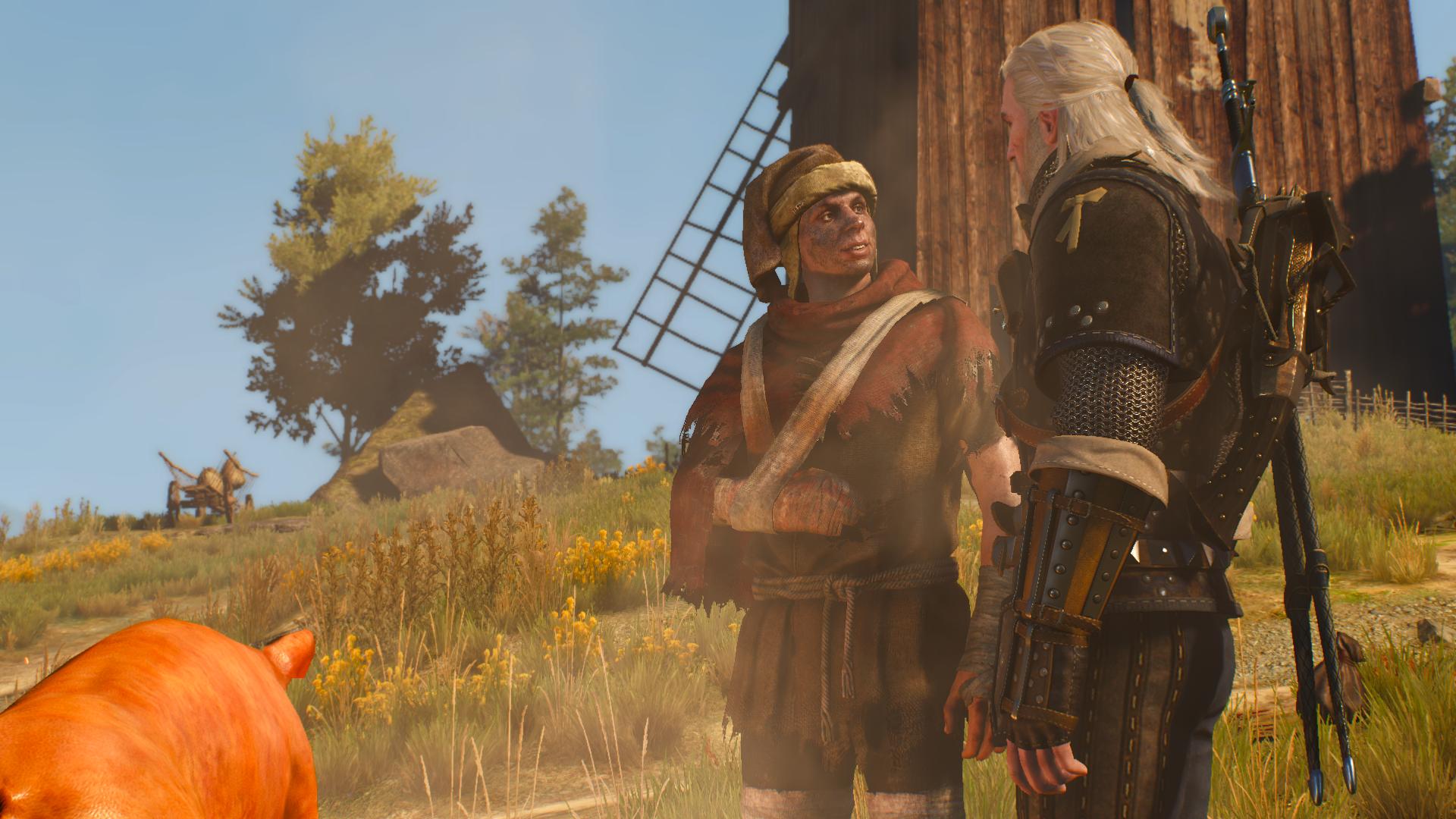
The Witcher: Wild Hunt is loaded to the gills with interesting, surprising, carefully made sidequests. It’s possible to get lost in the game to the point that you barely remember to get the narrative back on track. What’s more, most of Wild Hunt‘s sidequests are as varied and well-thought-out as the main story missions.
Edge: The Witcher 3, easy. Some of Inquisition‘s optional missions are great, but the majority of them pale in comparison with the side stuff in Wild Hunt. It’s almost an unfair comparison — The Witcher 3‘s sidequests set a new bar for what we should expect from RPGs.
The Clothes
Dragon Age: Here are the kinds of outfits they wear in Dragon Age: Inquisition:
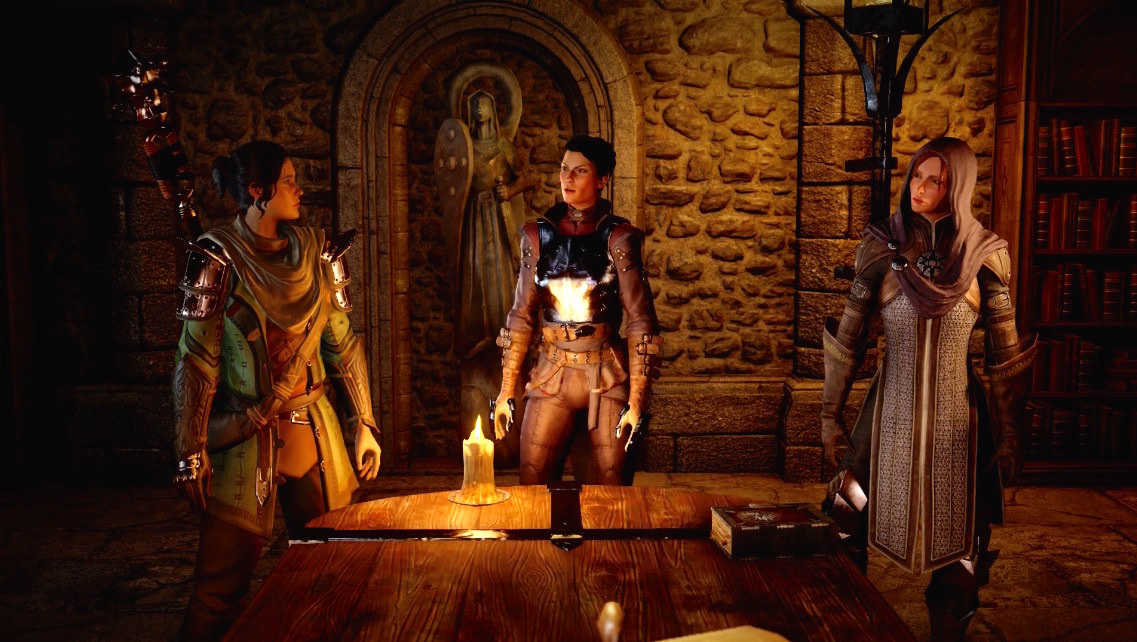
The Witcher: Here are the kinds of outfits they wear in The Witcher 3: Wild Hunt:
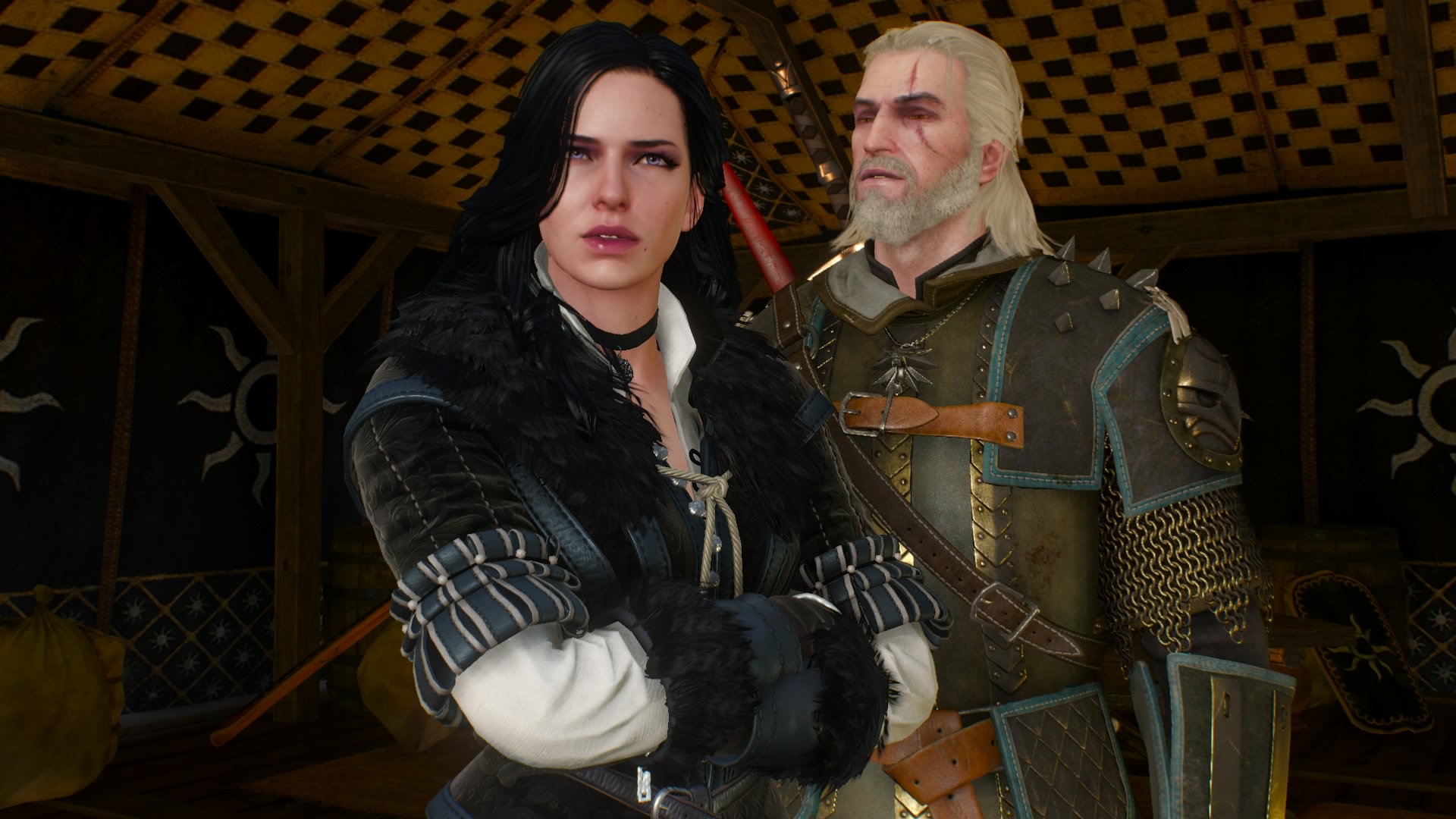
Edge: The Witcher. Like many other aspects of the game, clothes in The Witcher are weighty and feel somehow specific in a way that other fantasy games, Dragon Age included, just can’t match. Those big chunky medallions, the straps and strings tying armour together… many of the outfits — nip-slipping sorceress lingerie excepted — feel tangible and practical to a degree that’s unusual for any video game. Also, the metal armour in Inquisition looks cheap and tacky.
The Sex
Dragon Age: In Dragon Age, you can romance and have sex with many of your travelling companions. The actual sex scenes have occasional moments of actual sexiness, but are mostly like watching two rubber dolls bump their faces together. The best of those scenes is probably the one with Iron Bull:
The Witcher: In The Witcher 3, Geralt can romance and have sex with a few of the female characters and visit brothels to quench Geralt’s thirstiness in between. The actual sex scenes have occasional moments of actual sexiness, but are mostly like watching two rubber dolls bump their faces together. The best of those scenes is probably the infamous Unicorn Scene:
Edge: Dragon Age. Perhaps a controversial pick, but Dragon Age often uses sex to explore its characters in a way that The Witcher doesn’t, though that does seem to have been a conscious choice on the part of CD Projekt Red. Neither game puts sex on the same uncomfortable pedestal that past RPGs have, which feels like progress… but neither game manages to make kissing look like anything more than an awkward, difficult programming challenge that necessitates creative blocking and quick camera cuts. And when it comes down to it, nothing in The Witcher 3 manages to outdo that instant-classic Iron Bull scene.
The Combat
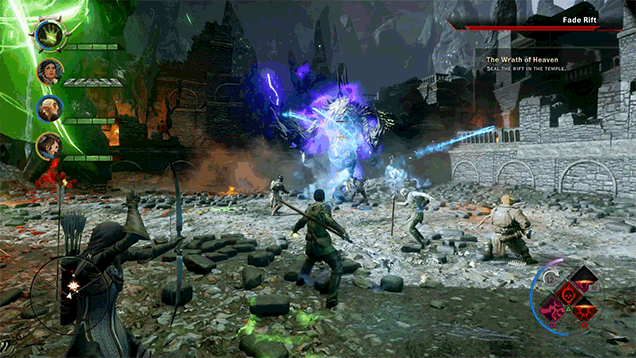
Dragon Age: Inquisition‘s combat is a mixture of tactics and real-time action. You control a party of four characters, hopping from character to character and giving orders while periodically pausing the action to zoom out and take a more strategic approach.
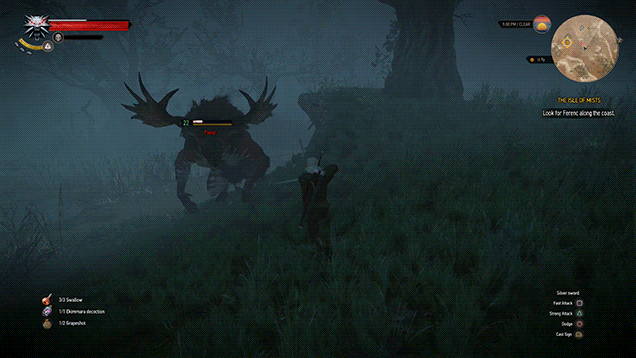
The Witcher 3: Wild Hunt‘s combat takes place in real time. You control Geralt as he swings, stabs, blocks, and parries enemies of all sizes and shapes. You can slow the action to a crawl and pick from among your equipped spells and items, but that’s as tactical as things get.
Edge: The Witcher 3. Inquisition‘s combat is enjoyable enough, but it can be fiddly and lacks the depth of its predecessor Origins. Wild Hunt‘s combat, meanwhile, is rarely less than exactly what it sets out to be — a nifty mixture of Dark Souls and Monster Hunter that works suitably well on higher difficulties.
The Box Art
Dragon Age: The box art for Inquisition looks like this:
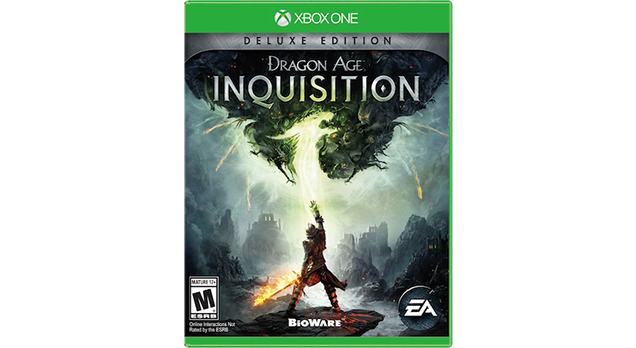
The Witcher: The box art for Wild Hunt looks like this:
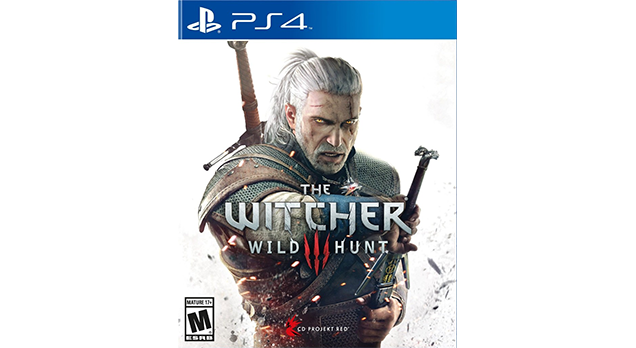
Edge: Dragon Age. Both games’ box illustrations tell you what the game is about ably enough. Flaming swords, sexy dudes with white hair, monsters from the sky, etc. But Inquisition‘s box art does something unusual for even a BioWare RPG — it manages to be compelling without defining anything about the character it portrays. It could be a man on that box, or a woman; it could be an elf, or a human. Given how many RPGs plaster their promotional materials with the anointed “default” protagonist (usually a white dude), it was cool to see Inquisition deviate. None of which is to say that The Witcher 3 could’ve or should have done anything differently; it was just nice to see EA/BioWare try something new.
The Vague Sci-Fi Tie-Ins
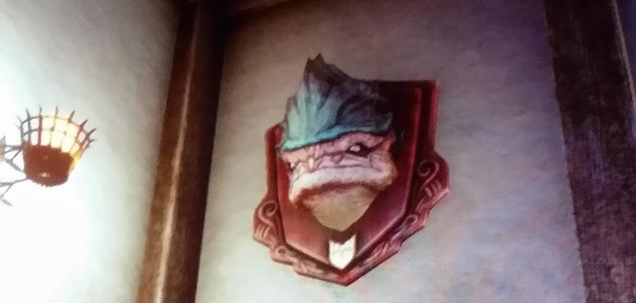
Dragon Age: BioWare doesn’t just make Dragon Age games; they’re also responsible for the Mass Effect series. So of course, there are a few Mass Effect references in Inquisition, including a mounted Krogan head you can find in a house, along with journal entries written by a doctor who sounds an awful lot like Mass Effect‘s beloved salarian scientist Mordin Solus.
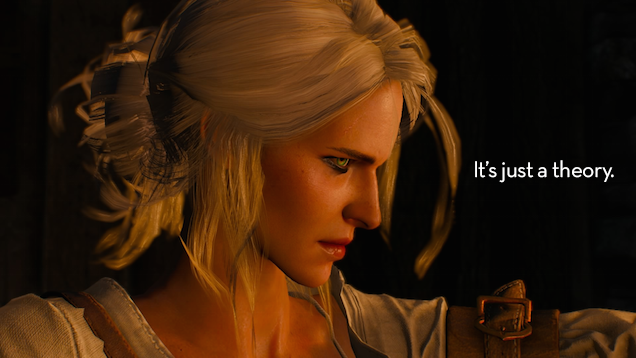
The Witcher: CD Projekt Red doesn’t just make Witcher games; they’re also working on a hotly anticipated adaptation of the Cyberpunk tabletop games called Cyberpunk 2077. And while that game isn’t even close to coming out, there’s an exchange in The Witcher 3 that raised our eyebrows. When Geralt finally finds Ciri, she tells him of an alternate dimension where she stayed for some time in which people had “metal in their heads,” “waged war from a distance” using strange devices, and “everyone had their own flying ship.” Sure sounds cyberpunky to me.
Edge: Draw. In one way, The Witcher wins this one by suggesting that there will be a real crossover between the two games. (If Ciri turns up in Cyberpunk 2077, I will be so happy.) In another way, Dragon Age wins by making references that, cheeky and joking though they may be, we’re sure actually mean something. If Ciri makes a cameo in Cyberpunk 2077, someone remind me to come back and change this to give the clear edge to The Witcher 3.
The Menus

Dragon Age: Inquisition‘s menus are a cumbersome mess. They take ages to navigate, and upgrading your gear is more complicated than assembling a LEGO pirate ship in a dim room.
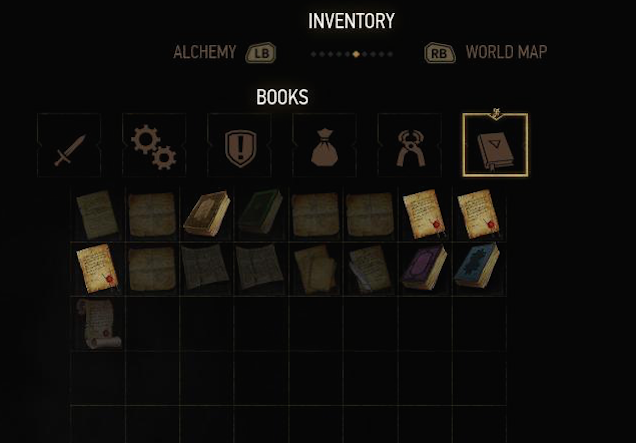
The Witcher 3: Wild Hunt‘s menus are a cumbersome mess. They take ages to navigate, and upgrading your gear is more complicated than assembling a LEGO space station in a dim room. Worse, at launch, the game’s text was so small it was unreadable on many TVs.
Edge: No edge, everyone loses. Please, RPG developers: If you’re making a game to be played with a controller, figure out how to make menus that aren’t a huge bummer! Points to The Witcher 3 for having a post-release patch that at least made the inventory a little less cumbersome and the text a lot bigger, even though it’s still a band-aid on an axe wound. It’s time for a fantasy RPG to rethink the notion of menus, from the crafting screen to the “junk” tab.
The Dorky (Perfect) Musical Sequence
Dragon Age: At the lowest moment, your rag-tag bunch of refugees come together and sing a song about the Maker. It is extremely dorky and also utterly wonderful:
The Witcher: Partway into Wild Hunt, Geralt attends a poetry reading by Priscilla, Dandelion’s writing partner and I-guess-girlfriend-it’s-sort-of-unclear. She sings some poetry for a rapt audience. The song goes on for approximately one hundred years, is extremely dorky, and is also wonderful:
Edge: Draw. Both of these scenes are lovely in their own awkward, extremely nerdy way. “Yes,” the games both say, “the character models are stiff and the animations are jerky. Yes, the fact that you’re watching crudely animated video game characters is never clearer than when you’re watching them pantomime like they’re playing music. Forget about that. Just go with it.” Hopefully, you go with it.
The Celebrity Cast Member
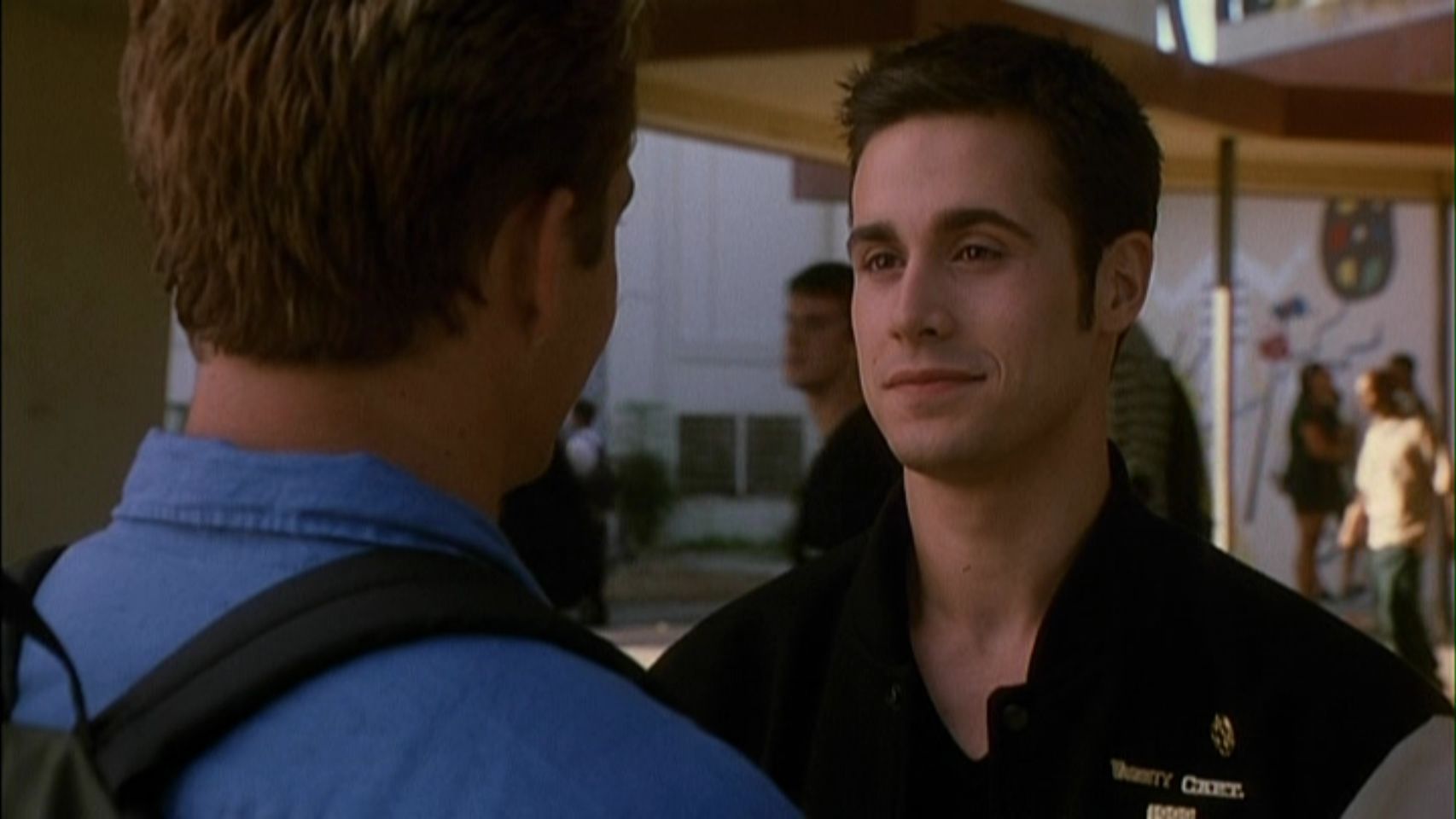
Dragon Age: The most notable famous person in Inquisition is former 90s rom-com star Freddie Prinze, Jr., who plays the gruff, loveable Qunari mercenary Iron Bull.
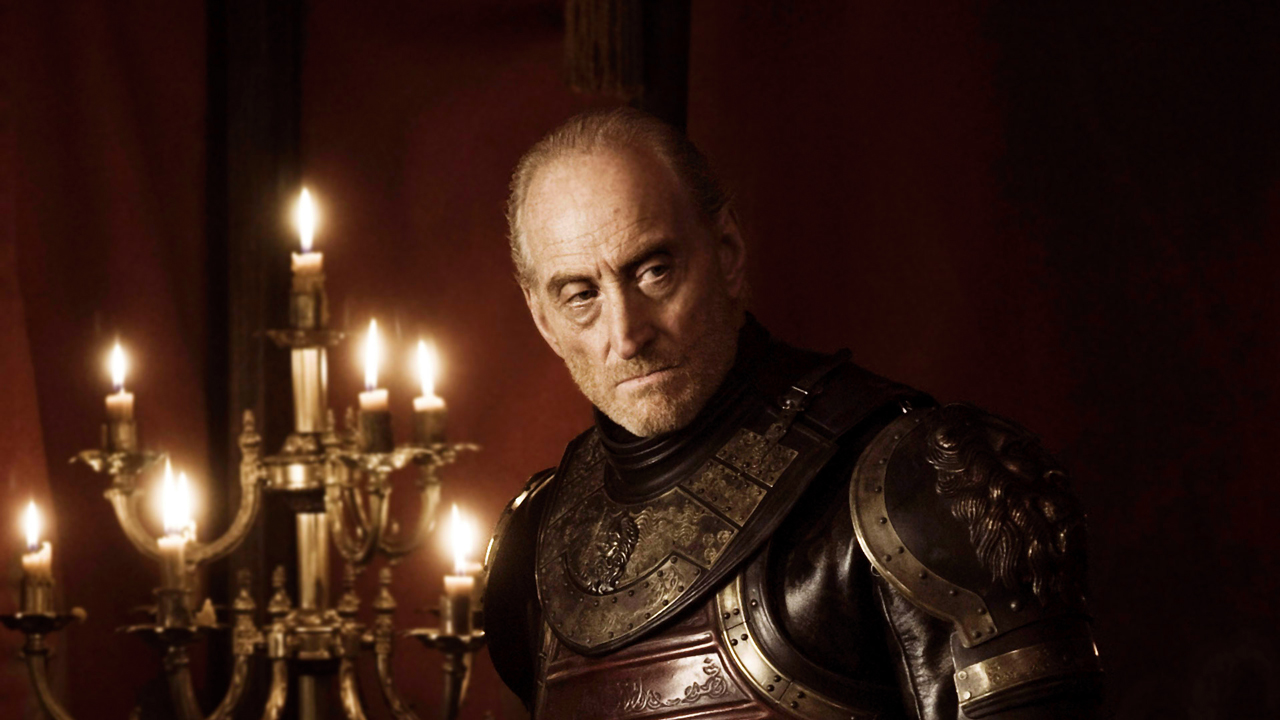
The Witcher: The most notable famous person in Wild Hunt is Charles Dance, best known for his portrayal of the flinty patriarch Tywin Lannister on HBO’s Game of Thrones. Dance plays the dickish, unlovable Emperor of Nilfgaard, Emhyr var Emreis.
Edge: Dragon Age. Dance’s appearance in Wild Hunt was hyped quite a bit in advance, but in the end, his role was fairly limited and Emhyr himself just wasn’t all that interesting. Meanwhile Iron Bull was the best character in Inquisition thanks largely to Prinze, Jr., whose lusty, soulful performance stole every scene in which he appeared.
The Horse
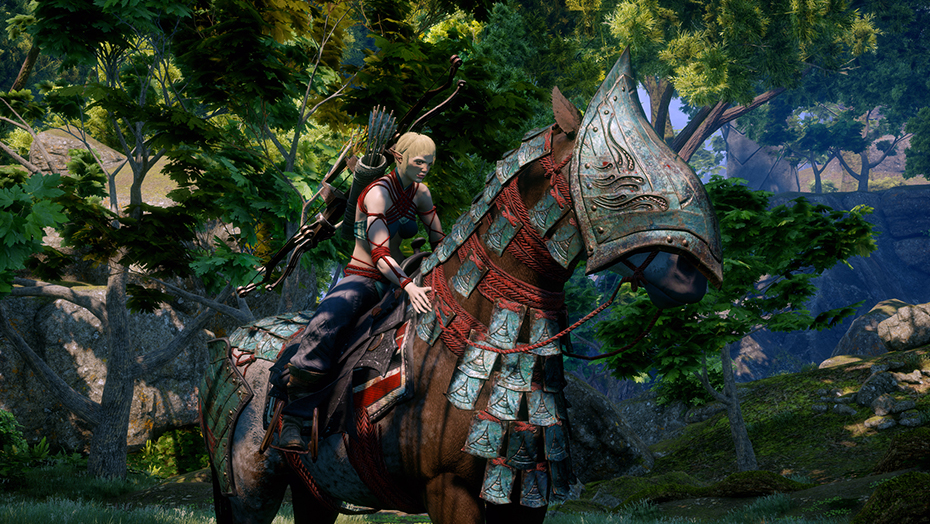
Dragon Age: In Inquisition, you have a horse. It’s just sort of this… horse. You can ride it if you want, or not. Most people don’t really ride the horse. When you sit on it, you kinda look like a doof. Also, when you get on the horse, your companions all disappear, and when you get off, they reappear next to you. On the upside, you can switch your horse out for a number of other types of mount, including weird dragon-like monster things.
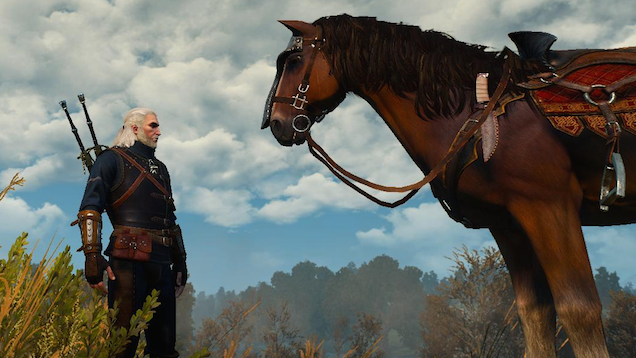
The Witcher: In Wild Hunt, you ride Geralt’s faithful steed Roach. If you whistle, Roach will come running, often appearing in the goofiest ways possible, then lingering in the background and screwing around while you’re trying to to talk to someone. She also functions as an explanation for the game’s extended inventory — purchasing bigger saddlebags for her lets you carry more around.
Edge: The Witcher, easy. Lots of people complain about Roach — she may control better after the most recent patch, but she’s still kind of all over the place. Still, I’m a fan. There’s something so winning about the goofy creature… when you whistle and she comes flouncing through the underbrush like an oversized golden retriever, it’s hard not to smile.
The Ending (Spoilers!)
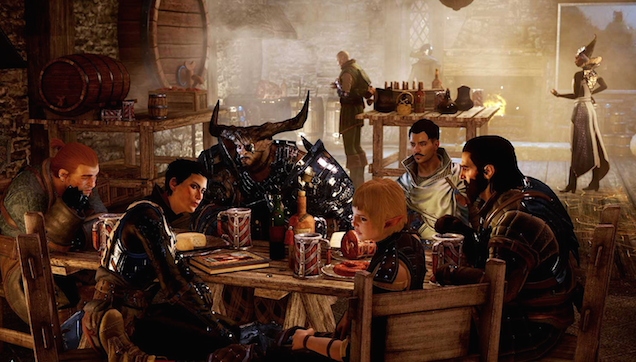
Dragon Age: In Inquisition‘s final act, the Inquisitor and his/her posse finally take on Corypheus and his mega-dragon by waging a great battle in the sky. At least, I think that’s what happened, it’s sort of a blur. After the good guys win, they throw a big party, where you can go talk to everyone and remember how much fun you had over the course of the game. In a final twist, it is revealed that your companion Solas was — apparently — an ancient Elven deity, and in the final scene he appears to grow more powerful than ever.
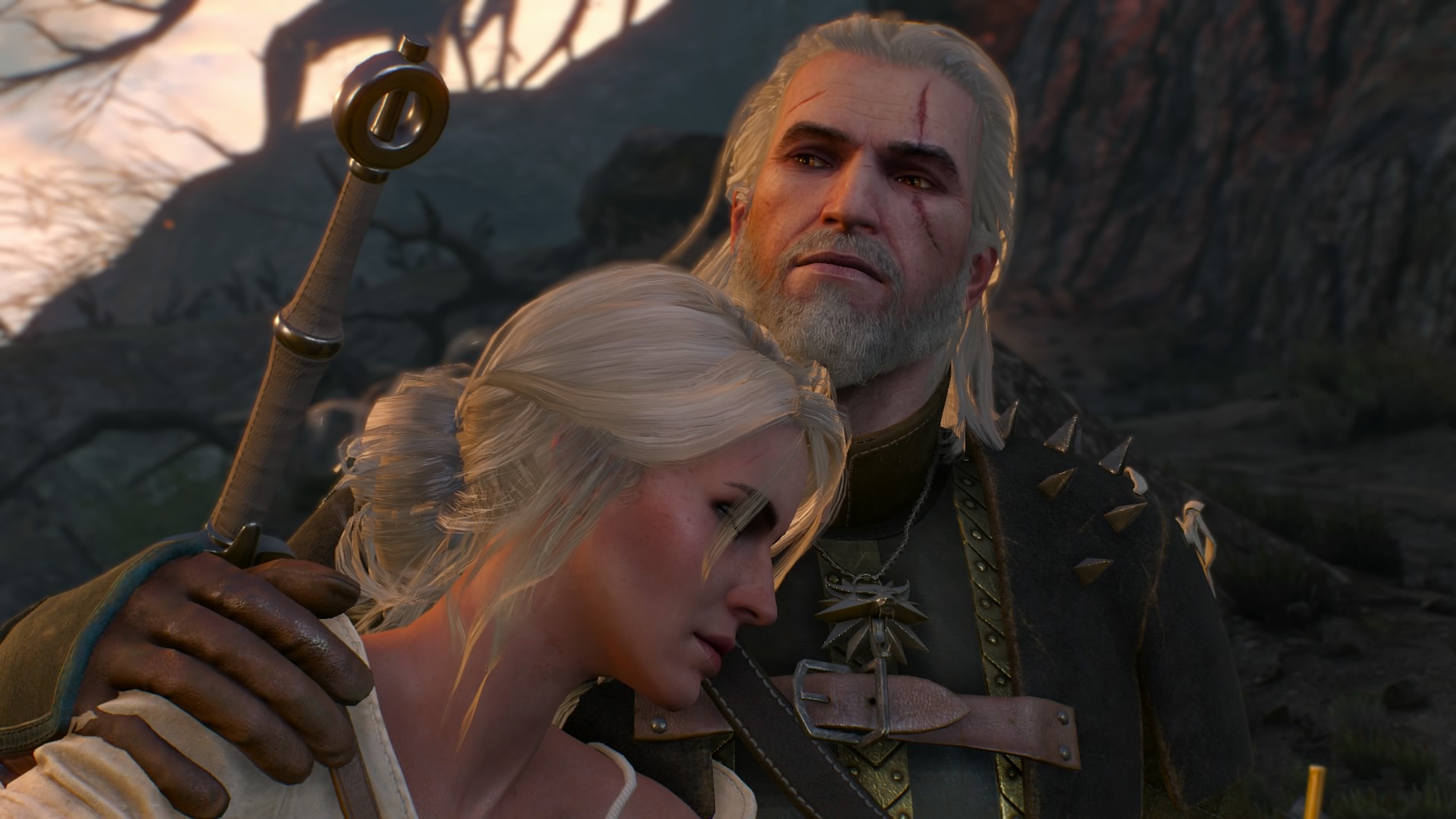
The Witcher: At the end of Wild Hunt, Geralt and his posse use a magic item called the Sunstone to draw out Eredin and the rest of the Wild Hunt for a final showdown. Geralt defeats Eredin only to learn that the elf Avallac’h has taken a willing Ciri to a nearby magical tower, where she is planning to sacrifice herself to save the world from a looming apocalypse called the White Frost. Depending on the choices you’ve made up to that point, Ciri can either A) return and assume the throne as Empress of Nilfgaard, B) return and agree to fake her own death, following in Geralt’s footsteps as a travelling monster killer for hire, or C) apparently dies in the tower, leaving Geralt alone to avenge her. I got ending B, and thought it was just lovely. Whatever ending you get, the story really ends, with an epilogue that explains what Geralt of Rivia did until the end of his days.
Edge: The Witcher. While no game as big as either of these two games could hope to tie everything together with a neat and tidy ending, Wild Hunt comes surprisingly close. I thought that the final scenes with Geralt and Ciri were unusually affecting, particularly given that I’d taken the time to really role-play his interactions with her throughout the story. The game’s many illustrated epilogues offer closure for the characters you’ve met along the way, and their pared-down presentation makes it possible for a wider variety elaborate endings than fully rendered cutscenes would have. In comparison, Inquisition‘s conclusion feels broad and a little pat; the final showdown with Corypheus was a disappointing boss fight with little in the way of surprises or narrative stakes.
The Last-Gen Version
Dragon Age: There were versions of Inquisition released on PS3 and Xbox 360, but they were… rough. While both technically worked, they were fugly and bare-bones and felt like an afterthought.
The Witcher 3: There was no last-gen version of The Witcher 3.
Edge: The Witcher 3. It makes sense that EA/BioWare would want to cover their bases and release Inquisition as a cross-gen game, but it wound up being the wrong call. The crusty last-gen version couldn’t have made many gamers very happy, and by requiring the game to run on dated consoles, the new-gen version was held back from what it could’ve been. CD Projekt Red’s decision to release The Witcher 3 only on new consoles was a gamble at the time they announced it, when both the PS4 and Xbox One hadn’t even been officially revealed. But as we’ve seen from the finished product, it was a gamble that paid off.
The PC Version
Dragon Age: The PC version of Inquisition caught a lot of heat for being undercooked, having awkward mouse/keyboard controls, and for having a lot of bugs on various PC gaming setups. The PC issues lingered well after launch, though EA/BioWare has been steadily patching the game and gradually addressing various problems.
The Witcher 3: The PC version of Wild Hunt caught a lot of heat for not looking as good in its final incarnation as it had in early promotional footage. It was a controversy that wound up saying as much about the way games are hyped and marketed as it did about the actual finished game, which looked splendid when taken on its own. CD Projekt Red has already released a number of patches, improving performance on various PCs, nuking bugs, and generally improving the game across the board.
Edge: The Witcher 3. Both games had their share of problems on PC, but in the end, CD Projekt Red has been quicker about fixing problems and responding to fan complaints than EA/BioWare. It’s nice to see a company patching their game in time for the initial wave of players to reap the benefits.
The DLC
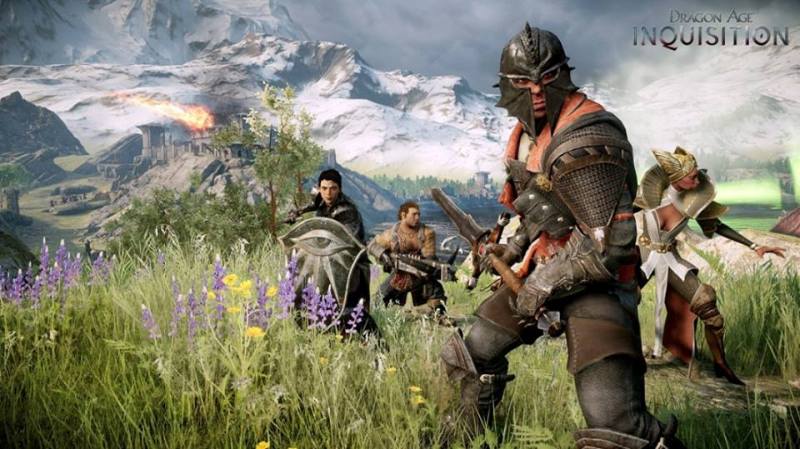
Dragon Age: So far the DLC for Dragon Age appears to be following publisher EA’s traditional approach to expansions and DLC. You can buy some cheap collections of gear, like the $US5 Spoils of the Qunari pack, as well as at one major expansion so far. That expansion is called Jaws of Hakkon and was exclusive to PC and Xbox (read: unavailable on PlayStation) for several months after it was released.
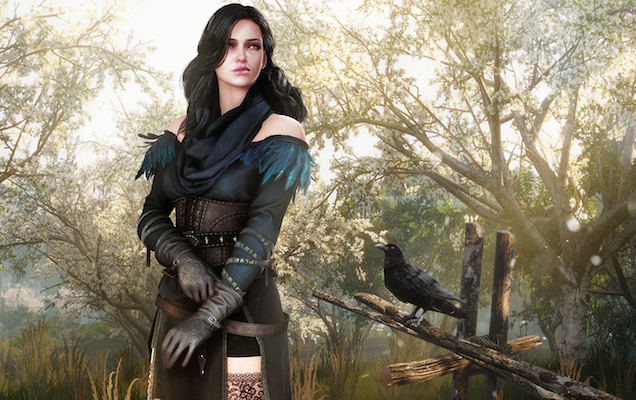
The Witcher: CD Projekt Red has outdone itself by offering not one but 16 pieces of post-release DLC for The Witcher 3, all of it free. There are cosmetic additions, like new outfits for several characters, as well as collections of armour and other gear and even a few full-length sidequests, a couple of which are really interesting. The final piece of free DLC will add a New Game + mode, after which two major (paid) expansions will be available.
Edge: Do I really have to say it? The Witcher 3 wins this one, hands down. CD Projekt Red’s generous dedication to post-release support of their game has won them so many hearts and minds that it’s a shame more video game publishers don’t follow their example. This is how it’s done.
The Cosplay
Dragon Age: Dragon Age cosplay is generally amazing:
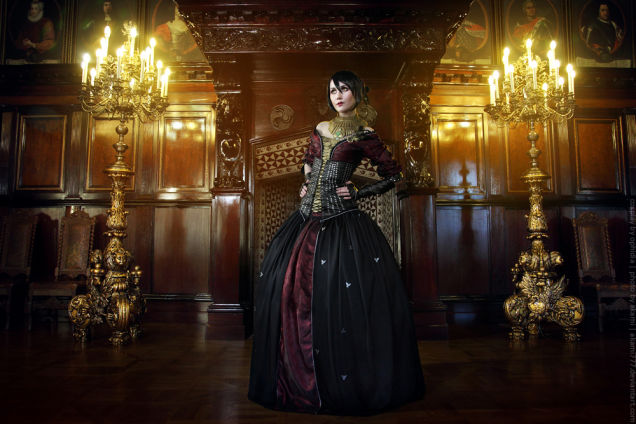
The Witcher: The Witcher cosplay is also amazing:
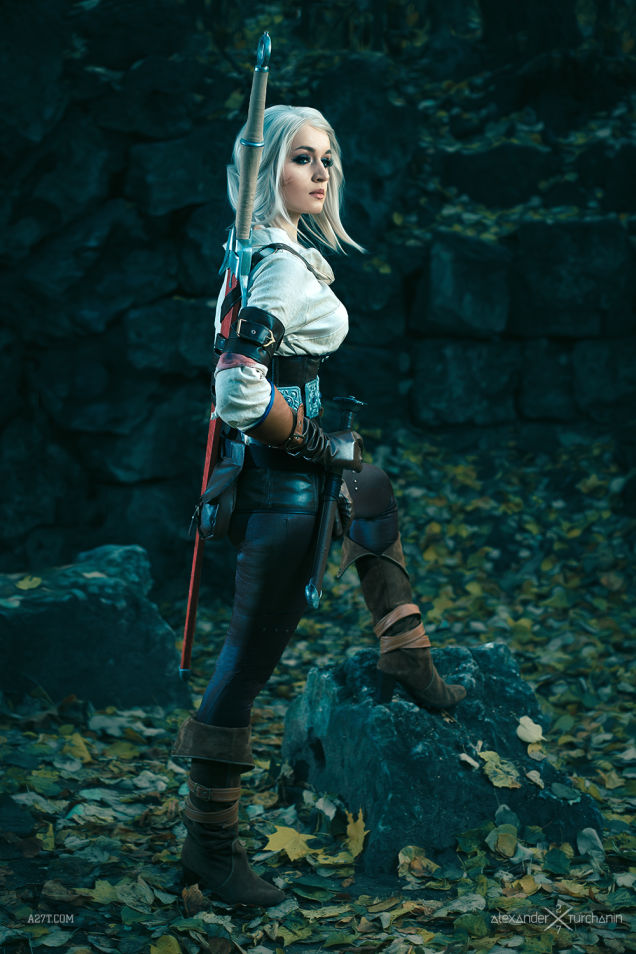
(Love Squad, photo by Alexander Turchanin)
Edge: Everyone wins. Awards all around. These cosplayers are amazing.
And last but not least…
The Herb Collecting
Dragon Age: In Inquisition, you’re constantly collecting herbs mostly to craft potions that you’ll almost never use.
The Witcher 3: In The Witcher 3, you’re constantly collecting herbs mostly to craft potions — sorry, “decoctions” — that you’ll almost never use.
Edge: I don’t know. I’m sick of collecting herbs. Why are there so many herbs? Let’s take it easy on the herbs.

I’m sure there are a hundred other ways I could compare these two games, but I’d say we’ve covered the big ones. If you have any further thoughts or points of comparison — and I’m guessing you do! — I hope you’ll share them below.
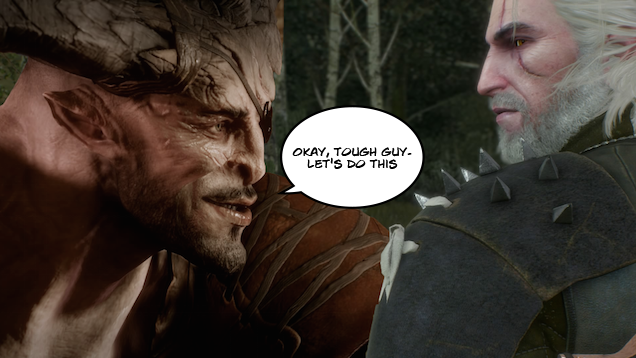
Comments
18 responses to “The Witcher 3 Vs. Dragon Age: Inquisition: The Comparison We Had To Make”
For the herb collecting I say the edge goes to the witcher.
I agree that the exercise itself is tedious in both games but the context of it make more sense in the witcher.
In the witcher herbs are needed for making potions and oils which will greatly assist in combat, so it make sense collect them.
In dragon age, it serves almost no purpose (to me anyway). And why I, the almighty savior of the world, need to collect them? Why couldn’t any of the soldiers that loyal to me do it? It’s not enough that I have to save the world, I have to pick herbs too?!
If you go to the mission table, you actually can send the loyal soldiers out to pick herbs for you.
For me they were similar on many levels too. Overall the differences in setting, delivery, imagery and themes really made Witcher stand out.
I enjoyed DA and it stands on it’s own merits, W3 just pulled me in more. (Even with the option to create my own likeness in DA)
Same here.
I am kind of sick of playing myself in different sittings. I want to be Geralt or Shepard, I want to experience things through them.
I would love to get into DA but I cant even finish The Witcher with my two kids under 18 months….
I saw it was cheap digitally recently… Was going to buy it last night but I cant finish anything I own at the moment!!!
I just can’t get in to the Witcher 3. I’ve tried. So, so hard. It just doesn’t click with me.
Love Dragon Age though. Played through all three multiple times. Might be time to start Inquisition again!
In my opinion DA:I was godawful. Which is really, really sad because I absolutely loved Origins. I thought it was finally the second coming of my favorite type of RPG. That the series immediately took a complete nosedive into utter shit with DA2 still stings. DA:I is not quite that bad, but ultimately still just makes me upset about what could’ve been.
It all came good though, since a few years after it became obvious that the Dragon Age series was not, in the end, going to be what I wanted, we started getting Wasteland 2 and Pillars of Eternity and Divinity: Original Sin. I would rather that Pillars, especially, had tried harder to do something to advance the formula rather than wholesale copying it, but hey, at least it was a near-flawless execution of said formula.
I probably got around 40% through DA before I simply got bored with the same old stuff being repeated. Witcher 3, I played through to the end and loved almost every moment, start to finish.
I really enjoyed Dragon Age, well the first 50+ hours and the story I enjoyed till the end. But the game did drag on and the there was probably too much content or maybe not enough interesting content. Still up until the Witcher came out it was still my favourite game of this console generation.
The Witcher is something else. It is one of my favourite games of any generation. You didn’t really need to do a lot of the side missions but you just wanted to as there was so much character to them. I also found the combat better, whereas with Dragon Age it was only really the dragon fights I found interesting by the end.
I did plan to play both games twice – I started on Dragon Age but just could not get out of the Hinterlands. Just so much to do but it was dragging on a bit the first time and theres no incentive to do it again. Whereas when I started again with the Witcher – there’s probably less incentive to play it again, once I got out of White Orchard it was interesting enough to go forward. I did buy the Dragon Age Expansion/DLC but Im not sure how it will hold up in a post Witcher world
Agree with many of the points made. One thingI disliked about the fast travel in DA though is that you can’t go across regions. You first need to fast travel back to the hub, run up the hill, run into the castle, run into the war room and then finally pick where you want to go. In Witcher, you can pick anywhere on any accessible map to go and click. I just got sick of having to run up that damn hill all the time in DA.
It’s a bit strange to give Witcher the edge for a last-gen version that doesn’t exist, based only on the assumption it would have held back the XBone/PS4 versions.
From my limited time with Dragon Age, I have to say I absolutely prefer The Witcher 3. Wild Hunt has come through and been probably my favourite game in years and years.
However, I didn’t give Dragon Age enough of a chance. I was put off by that bug where your party doesn’t talk enough. I didn’t have it, but I was always worried that I did. I absolutely need to pick it up again and give it a proper go though. If I grab it now I may be able to finish it before any new releases come out and take my attention away.
Once the upcoming Witcher 3 expansion comes out though…
Dragon Age wins, just because there is some writer at BioWare high-fiving the shit out himself for “Look, I get it. You want to ride the bull.” WHICH IS NOW EVEN BETTER THAT I KNOW IRON BULL IS FPJ
way too many words, to put it much simpler:
Witcher 3 > Dragon Age Inquistion. DA is now like a shadow of a once great game that betrayed everythign that made the first one great to satisfy the fickle console crowd (i say that as a proud ps4 owener). Where as Witcher 3 converted a PC game, nah, improved on a PC game over the first two and welcomed console sensiblities and managed to merge the two ALMOST perfectly.
DA could be a good game under all that woeful UI and painful combat but it keeps making me want to quit, all the time, where as there is never enough hours EVER in a day to play Witcher 3.
I liked DA more, the witcher felt a little slow and repetitive early imo
You don’t have to do that. All you have to do to travel in DA is open up the Quest Map and pick a destination like a camp or those compass looking icons in a village. You can do it from anywhere unless it’s a cave. Only thing reason you should fast travel from the war table is if you want to go directly to location immediately after doing some war table operations.
My first playthrough in DA: Inquisition was as an old, wrinkly, stabby female dwarf rogue. Developers that make games where you only get to play a male protagonist don’t get my money anymore. Even without the ability to customize a character’s looks or race, adding a choice of sex is important. Geralt’s storyline isn’t impossible to make female, including the ballads and romances.
I like informed opinion pieces… when they are done right.
And I find this one lacking…
To begin with there is no summary, if you are going to write something that compares two products and call it that in the title then the least you can do is provide a summary/verdict.
After all it is an opinion piece so your advertising revenue should not be affected right?
Now, let me comment on one major issue I happen to disagree with you on… Sex.
Sex is by far much better in Witcher 3 than it is in Dragon Age: Inquisition, Romances on the other hand are a different story 🙂
People have sex for fun, people have sex because they are attracted to each other and there is absolutely nothing wrong with sex, when engaged in by two consenting adults.
Furthermore I doubt anyone will agree that sex is something you spend 80 hours trying to get and travel half of the world in the process all while wiping out demons and dealing with half a dozen of country wide issues (there are easier ways to get laid).
Witcher actually has a realistic approach to sex, that is there is plenty of it and you can have it anywhere you want with a lot of other people (well almost).
You may not like it, you may disagree with it on moral, religious and any other grounds but just turn on a TV or look outside and you will see that you are in a minority.
Dragon Age on the other hand has romances that are epic in proportion and that do indeed let you learn a lot about the person you are romancing, not all of them end is sex though.
Inquisition combat is way more complex, than witcher. You cant really compare, not to mention there and many different play styles. you can even play it more like an action game like witcher. witch is almost not even a rpg,
PlayStation 1 games still the best ammirite?
I agree with a lot of this, but having played through TW3 and Inquisition I have to say I think The Witcher is better. Inquisition was just, I don’t know, missing something for me. I didn’t feel sucked in and it ended up feeling like a chore to keep playing. And I have to say I completely disagree on the music point, I felt the Witcher scene was head and shoulders above Dragon Age’s. I played the first two Dragon Age games a while back, but only a bit of TW2 so maybe I’ve just had too much Dragon Age…